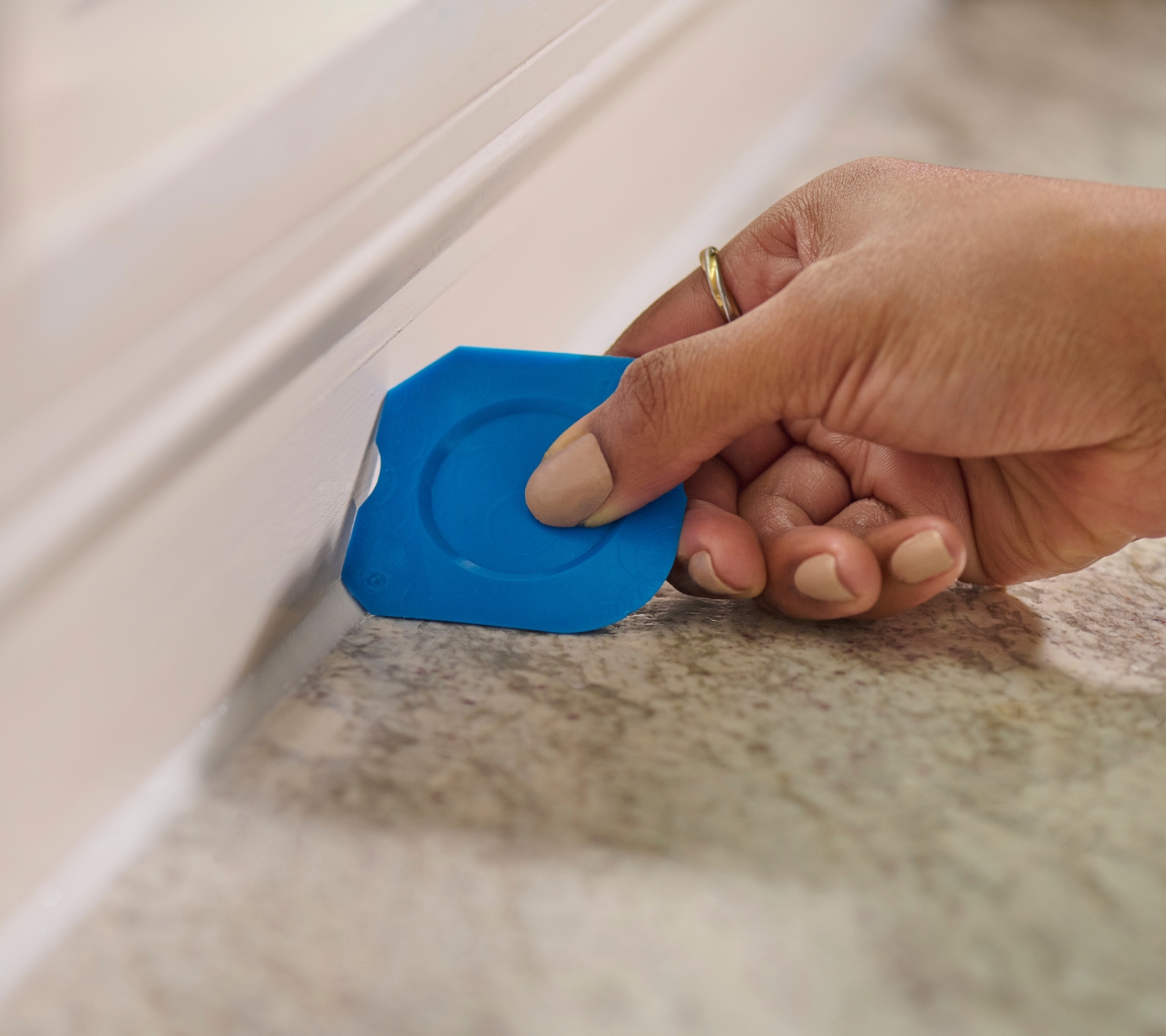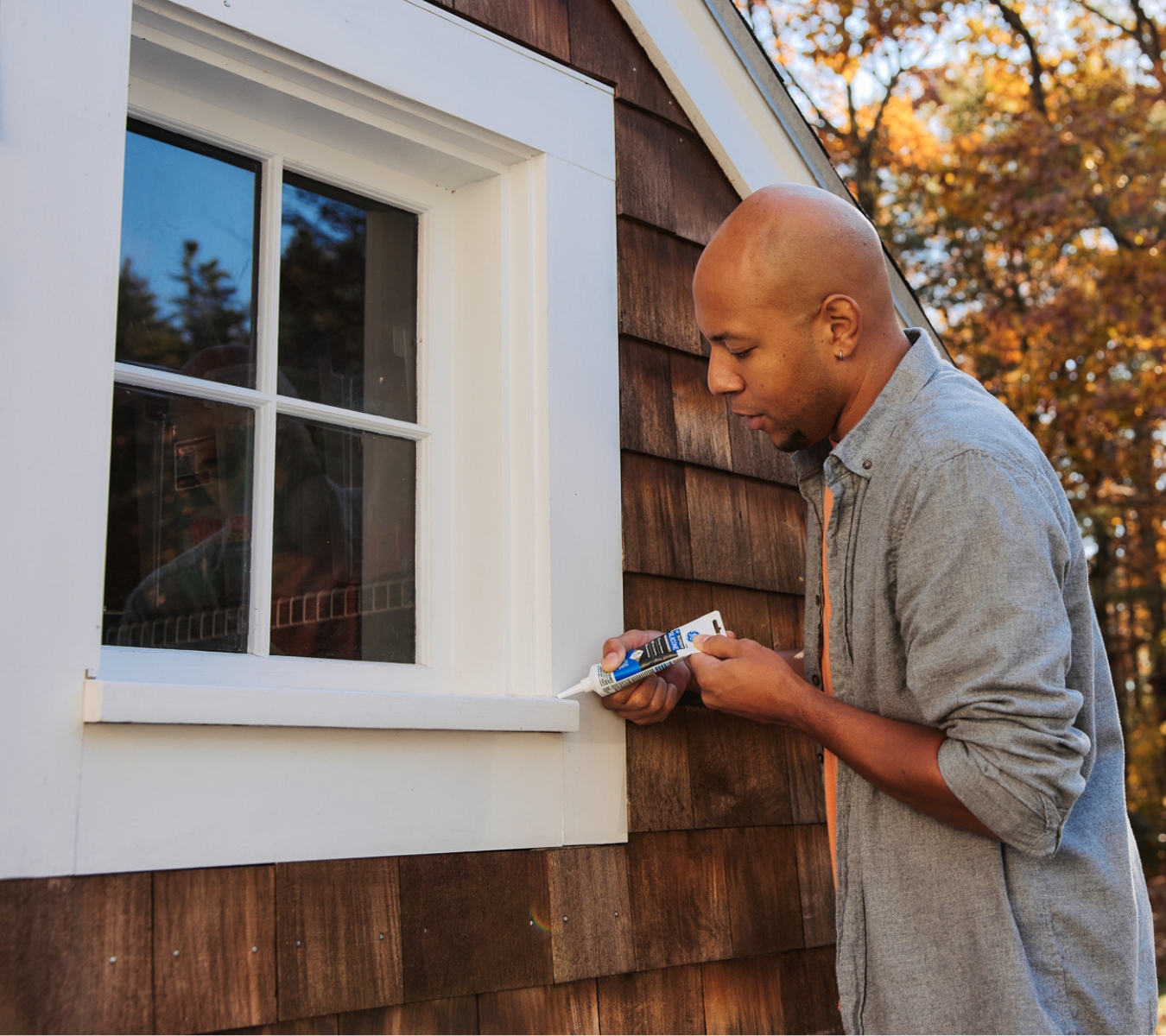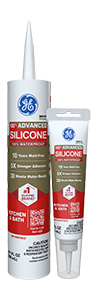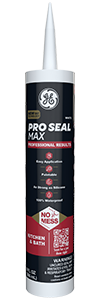This guide provides general maintenance information for rental properties. Always follow the instructions and limitations on the GE product label and TDS. Conditions vary by building and location. Comply with local codes and inspection requirements. For structural issues, electrical or gas penetrations, suspected mold, or hidden water damage, consult a licensed professional. Water-ready times and cure times differ. Apply only within the stated temperature range and use appropriate PPE.
Most leaks begin at seams, where water should never stand. A failed bead around a tub, sink, or window can turn into a real loss. Learn how to prevent water damage in your rental units by choosing and applying the right silicone sealant.
Water damage costs landlords thousands each year, yet most claims trace back to a small, unsealed joint.
A landlord’s quick guide on how to prevent water damage with silicone
Water damage rarely begins with a burst pipe. Sometimes, it starts with a small gap that lets moisture seep behind a surface. In a single unit, that gap might go unnoticed. Across a portfolio, it can lead to thousands of dollars in repairs and lost rent. The average claim for water damage is about $12,000, and most begin at failed seams around tubs, sinks, windows, and toilets. Most of these failures are preventable with proper sealing and the right sealant.
GE 100% silicone sealant forms a waterproof, flexible joint that keeps its seal through normal use and cleaning. It stays intact as your building moves and cures fast enough for tenants to use again in about 30 minutes (see the tube’s instructions).
The water damage prevention plan is simple. Seal the high-use areas first—bathrooms, kitchens, windows, and utility penetrations. A $10 tube of silicone can stop repairs costing ten times more.
Bathrooms: the highest-risk joints and the right silicone sealant
Most interior water damage starts in the bathroom, often at edges that didn’t look urgent yesterday. Constant moisture, seasonal expansion, and flex around tubs and surrounds make this the hardest room to keep sealed. A small gap can send water under the flooring. But you can control it with a simple routine you repeat on every turn. These steps are the foundation of water damage prevention in bathrooms.
Where to inspect and seal
Start with the joints that fail first and cost the most when they do:
- Tub and shower perimeters
- Vanity backsplashes and sink edges
- Faucet bases and escutcheons
- Toilet base perimeter

Step-by-step plan
Follow this process, as it holds up in occupied units and saves you from repeat trips:
1. Remove any loose or cracked material. Use the GE Sealant Remover Tool to clear failed joints cleanly without scratching tile or fixtures.
2. Clean and dry the surface completely.
3. Apply between 40°F and 100°F in a smooth, continuous bead.
4. Tool immediately using the GE Sealant Smoothing Tool for an even, watertight finish. This prevents thin spots that leak early.
5. Allow 30 minutes before light water contact and 24 hours before heavy cleaning. Water-ready in 30 minutes does not mean fully cured. That early protection helps your tenants use the space without disrupting the curing time.
Choose the right product for each surface
Choose the tier that fits your surface and schedule:
- Good: GE Advanced Silicone Kitchen & Bath – 100% silicone for standard tubs, fiberglass, and ceramic surrounds.
- Better: GE Supreme Silicone Kitchen & Bath – Neutral-cure silicone for natural stone or metal; handles high movement and moisture.
- Best (paintable): GE Pro Seal Max Kitchen & Bath – A hybrid sealant, water-ready immediately for quick turns.
Use neutral-cure silicone on natural stone to prevent surface etching.
When to reseal
Cracked beads, pulled edges, or stains mean the seal has failed. Replace the bead immediately after spotting these signs to prevent water damage.
Bathrooms move more than they appear. Watch corners and vertical seams. When you see a dark edge or mildew creeping along a joint, scrape it, clean it, and reseal the same day.
Tell tenants they can use it lightly after 30 minutes. Have them wait a full day before cleaning. That one-day buffer keeps the bead intact and avoids callbacks.
When your joints stay sealed, you avoid service calls, protect finishes, and keep tenants satisfied.
Kitchens: high-use joints that need fast turnaround and lasting flex
Kitchens are second only to bathrooms for hidden leaks. Seams around sinks, counters, and backsplashes take constant splashing, cleaning, and movement. Each joint you seal here saves you a counter, cabinet base, or repair bill later.
Start with the seams that fail first: sink perimeter, backsplash edges, counter seams, dishwasher air gap, and under-sink valves.
Choose the product that fits your kitchen surfaces and turnover schedule:
- Good: GE Advanced Silicone 2 Kitchen & Bath – Use where water meets work, like along sink rims, faucet bases, and counter seams. It stands up to detergents, daily wipe-downs, and constant moisture, keeping those edges sealed through every turnover.
- Better: GE Supreme Silicone Kitchen & Bath – For joints that shift or carry high-value finishes, including undermount sinks, stone counters, and stainless edges that flex with temperature and use. The Class 50 rating keeps the bead tight and the surface protected.
- Best (paintable): GE Pro Seal Max Kitchen & Bath – For trim or backsplash areas that need paint before move-in, this hybrid is water-ready right away, cutting downtime between tenants.
Prep cleanly with the GE Sealant Remover Tool, then finish with the GE Sealant Smoothing Tool for a tight, even bead. Fifteen minutes here can prevent costly counter or cabinet repairs and cut tenant calls. That’s how to prevent water damage that starts in kitchens.
Exteriors and utilities: where water sneaks in first
Most water damage starts outside, around window frames, door casings, and utility cutouts that have aged a little too long. So, your water damage prevention strategy needs to look outdoors as well.
Weather shifts make those joints flex, dry, and separate. Once a seam opens, rainwater follows gravity inward, often showing up weeks later as a soft baseboard or a swollen sill. By that point, you’re not fixing a leak anymore. You’re fixing drywall, flooring, and tenant trust.
During every turnover, consider checking the exterior joints and resealing anything starting to separate. A few minutes outside can keep your maintenance calls and insurance claims lower throughout the year.

Start with windowsills, door frames, and trim. And then choose the right product for each area:
- Good: GE Advanced Silicone Window & Door – For standard joints that need a quick, durable weather seal.
- Better: GE Supreme Silicone Window & Door – For older wood or metal frames that move more. Its Class 50 for flexibility rating keeps movement joints sealed.
- Best (paintable): GE Pro Seal Max Window & Door – If the trim needs paint, go with this hybrid. It’s paint-ready in about an hour and water-ready right away.
You will want to check your utility penetrations, too. Washer boxes, vent cutouts, and pipe chases are common culprits. Fill larger gaps with GE Pest Block Insulating Foam, Gaps & Cracks, or Big Gaps & Cracks foam, then finish with a silicone layer to lock out moisture.
Those small seals can help you prevent water damage in your rental units by stopping humid air from condensing behind drywall and causing hidden rot.
Standardize your sealing routine for long-term water damage prevention
During every turnover, inspect high-use seams, remove failed material, clean and dry, then apply the right GE silicone sealant.
Log each application with a bead photo, date, and lot number for recordkeeping.
Use GE Advanced Silicone for standard joints, Supreme Silicone for natural stone or high-movement surfaces, and Pro Seal Max when paint and turnaround speed matter.
If a bead cracks, pulls, or stains, reseal it before it spreads. Record the cure and return-to-service time so tenants know when it’s safe to use again.
This routine protects finishes, prevents callbacks, and keeps your rental schedule steady.
Ready to reseal? Find GE silicone sealants for lasting water damage prevention in your rental units at a retailer near you in the U.S. or Canada.


